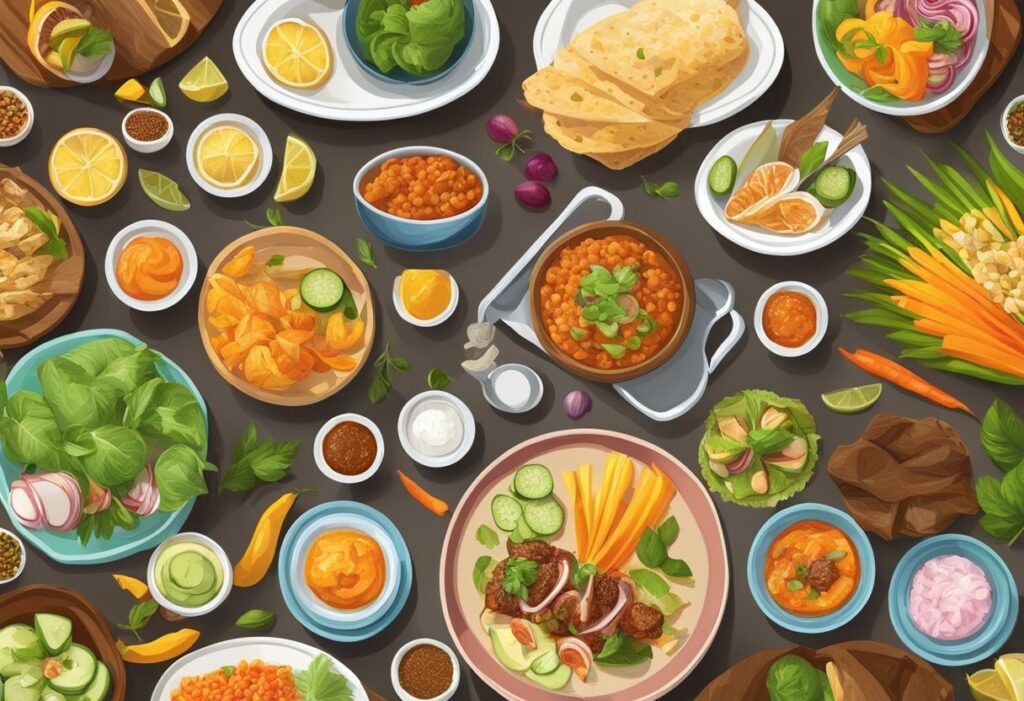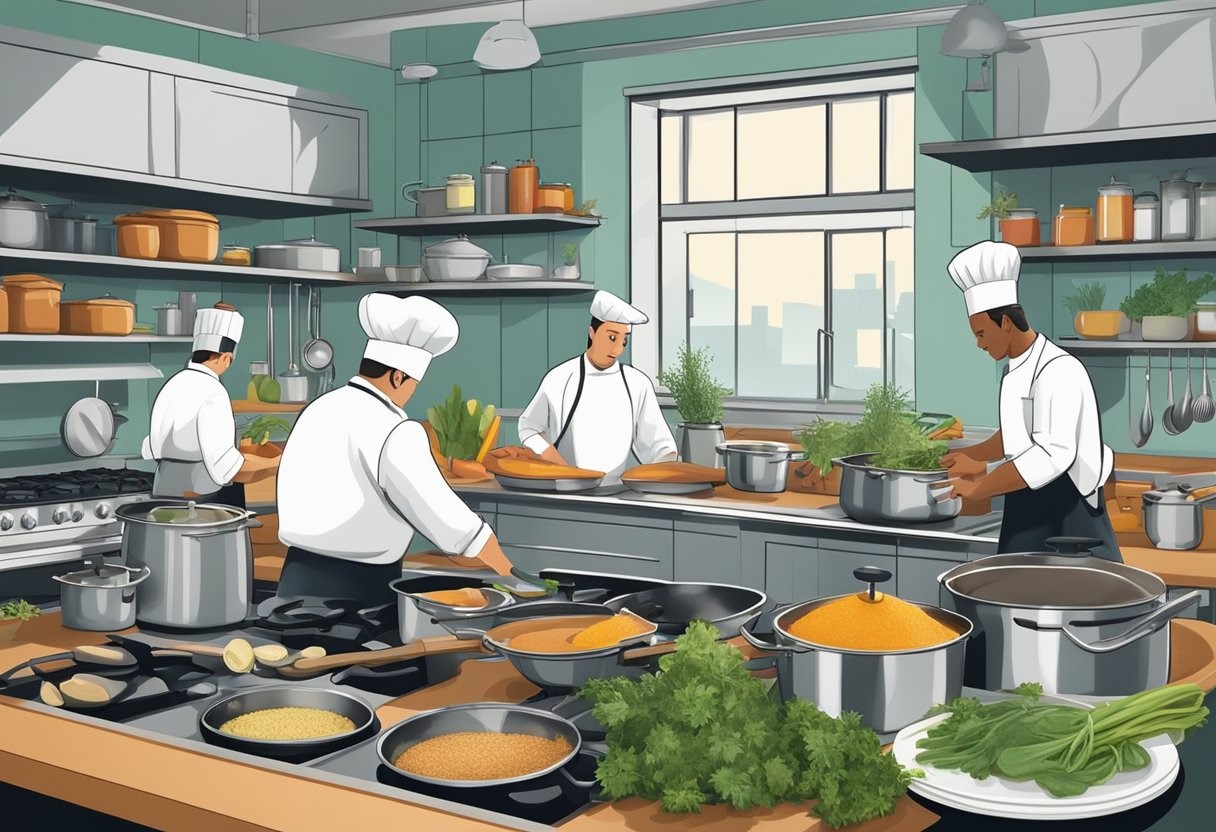
In the realm of culinary creations, especially when intertwining the robust strain of White Widow, the ultimate indulgence lies in the mastery of flavor profiles paired with visually arresting presentation techniques.
Your journey into the art begins with a profound understanding of ingredients. White Widow, a balanced hybrid known for its citrus and peppery flavors, can be the star. Consider the inherent flavor profiles:
Working with molecular gastronomy techniques lets you infuse White Widow in inventive forms, such as gels or foams, adding a layer of surprise in every bite.
Your plate is your canvas; a stage where visual appeal should harmonize with flavor. Key points in presentation include:
Food photography is instrumental in capturing the beauty of your edible art. Use natural lighting and thoughtful angles to make the visual appeal resonate beyond the table.
Remember, each dish you create is not just a meal, but an experience that engages all the senses.

Your quest for culinary excellence has led you to blend the audacious flavors of White Widow with the essence of American creativity and international culinary prowess.
American cuisine demonstrates innovation at its finest, particularly when infusing classic dishes with the pungent and distinctive taste of White Widow. Consider the aroma and zest it adds to a traditional mole sauce, transforming this Mexican-inspired dish into a sensory delight. Your taste buds are taken on a journey through a garden of spices enhanced by the earthy undertones of White Widow.
The international culinary scene offers a treasure trove of techniques and inspiration. In Italy, the fusion of White Widow with timeless Italian culinary creations brings an unexpected twist to classic pastas and pizzas. Your senses are intrigued by this bold experiment in taste. Moving towards Asia, Thai cuisine’s balance of sweet, sour, salty, and spicy flavors marries splendidly with White Widow’s characteristics. Imagine the burst of flavor as Bangkok’s street food, now paired with this herb, invigorates the standard fare. Last, allow Japanese cuisine to inspire you with its meticulous preparation of uni, a delicacy that, when combined with White Widow, becomes an exquisite meeting of land and sea.

Embark on a journey where gastronomy meets artistry, and chefs become your guides. This experience is not just about savoring flavors but also engaging with a community passionate about culinary innovation.
In the realm of culinary arts, chefs stand as the torchbearers of innovation and skill. Your adventure introduces you to culinary virtuosos who use their passion as a palette for creating edible masterpieces. The trend of using edible flowers in cuisine is just one example of their commitment to both aesthetic and taste. Food lovers like you appreciate the intricate balance of flavor and presentation, recognizing that food is an art form.
The right atmosphere can elevate a meal into a memorable culinary adventure. Picture yourself dining under the Athenian stars at a Michelin-starred restaurant or participating in an intimate cooking class. Here, community and environment converge to set the stage for an immersive culinary experience.
Your participation in these culinary adventures not only deepens your appreciation for the craft but also connects you with people who share your enthusiasm for exploring the art of food.
Begin by exploring local farmers’ markets and restaurants to discover fresh ingredients and regional specialties. American cuisine is diverse, from coast to coast, offering a trove of flavors influenced by various cultures and cooking styles.
White Widow can be used to enhance dishes like barbecue sauces for a smoky kick or butter infusions that can be used on grilled corn. Its robust profile also pairs well with sweet dishes such as a chocolate brownie, providing a depth of flavor.
Start with simple recipes like infused olive oil or honey that you can control the dosage of and incorporate into various American dishes like salads or glazes for meats.
Always start with a small dose to gauge potency and wait for the effects before consuming more. Keep edibles clearly labeled and stored away from children and pets.
The American South with its rich traditions in barbecue, the West Coast’s focus on fresh, local ingredients, and the Northeast with its seafood cuisine are all highly influential in shaping American culinary adventures.
We ship and deliver world wide via USPS and various couriers.
We offer a wide range of secure and anonymous online payment options.
We care about you, our customer. Please contact us with any questions or concerns.
Find out more about the benefits of being a loyal and regular customer.
WE ARE EVERY GROWERS ONE STOP SHOP TO ACQUIRE PREMIUM CANNABIS SEEDS FOR SALE IN THE USA, CANADA AND AUSTRALIA

Farmers Lab Seeds 2024, | All Right Reserved
Seeds are sold as novelty items, souvenirs, and collectibles. They contain 0% THC. We encourage our customers to check the legislation in their Country, State, Province, and Municipality prior to purchasing items from our store. We do not provide growing information.
All seeds are sold as hemp, and lab tested under 0.3% THC. This product is not for use by or sale to persons under the age of 21. This product should be used only as directed on the label. It should not be used if you are pregnant or nursing. Consult with a physician before use if you have a serious medical condition or use prescription medications. A Doctor’s advice should be sought before using this and any supplemental dietary product. All trademarks and copyrights are property of their respective owners and are not affiliated with nor do they endorse this product.
These statements have not been evaluated by the FDA. This product is not intended to diagnose, treat, cure or prevent any disease. Individual weight loss results will vary. By using this site, you agree to follow the Privacy Policy and all Terms & Conditions printed on this site. Void Where Prohibited by Law.